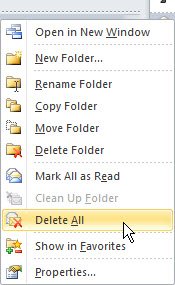
I had a bit of a negative post yesterday, and it got me thinking of these two posts.
I’ve said some of this stuff before, but I want to bring it all into a slightly different context.
Good user experience is…
Good user experience is not about forcing me to follow your atomic implementation of a feature. What do I mean by this? Let’s take look at some examples of getting it right (IMHO) from Oracle.
An Oracle REST Data Services (ORDS) web service is made up of a module with one or more templates, each with one or more handlers. We could define our service by defining a module, template and a handler separately, because that’s how the underlying implementation of an ORDS web service works. It’s fine, but it’s a bit over the top if I just want a quick little web service based on a query. That’s why we have been given the DEFINE_SERVICE procedure, allowing us to do all that other stuff in a single call (see here). For simple services this is all you need.
The database scheduler is a complex beast. We can define loads of things like schedules, programs, arguments, jobs classes, windows and of course jobs. That’s fine, but 99% of the time we just want a simple job, and the CREATE_JOB procedure allows us create one in a single call (see here).
In both cases we can choose between doing things the long/verbose way, or use the “cheat code” and do stuff in a single call. This is exactly the sort of thing I like when I’m using a feature. I want to know the flexibility is there if I need it, but if 99% of my requirements don’t, I want the cheat code so I can do what I need to do and move on. This also makes the feature more accessible to new people…
Good user experience is not…
As I mentioned above, good user experience is not about forcing me to follow your atomic implementation of a feature. Someone should take a step back and ask what would “normal” users really like? The answer is probably giving them an option to zone out and get all the prerequisites and config done for them. It’s not making them spend a weekend trying to figure out how to enable a feature, then finding it doesn’t really work properly anyway…
I’m a generalist. I have to work with lots of different products. When I open the docs and I see a list of prerequisites, and then multiple commands to actually set stuff up my heart sinks. I want a “we’ll do everything for you” option. That might sound funny because of my history, and if companies did that it would make my website redundant, but I feel we need to progress. We’ve been doing this nuts & bolts crap for too long. If I can automate it, Oracle can automate it. If Oracle can automate it, why don’t they?
I don’t want to name and shame. I’ve made some positive comments about Oracle in the previous section, but you know there are a whole bunch of Oracle things I could use as examples of what not to do. Oracle aren’t alone here. It applies to lots of other companies too.
But Tim, I want to…
I can already hear people typing their responses about their need to be in control and their obsessive configuration disorder. Shut up. I don’t care. The chances are, if you are reading this post, you are probably one of the people that can cope with all this tech, but there are many people who can’t, or don’t want to.
Won’t someone think of the children customers
I am a customer. My company is a customer. I can think of two things my company refuse to pay for because the functionality in question is unsupportable if I’m not available. Those are features we need, but won’t buy because they are overly complex for normal people to do well.
Now you can argue that cloud services will solve all these issues, but cloud adoption varies between regions, and maybe people will not pick your cloud. My company are a perfect example of that. We’ve consolidated on Azure, and although we don’t run any Oracle databases there yet, if we run Oracle on the cloud, it will probably be on Azure.
If you heard someone say, “I used to get a punch in the face every day, but now it’s only once a week. Things are good!”, you would think they were crazy. Less bad is not the same as good. I often think companies bring out tools and utilities that are “less bad” than what they had before. Not actually “good”. If you have been in the trenches, “less bad” might feel “good”, but it’s not.
I realise this is another rant, but I think it’s a subject that is worth a rant. I use a wide variety of tech from a number of companies, and some of them get on my nerves at times, because it feels like user experience is an after thought. You can’t expect everyone to no-life the learning curve for your products. I’m just saying how I feel, and I’m pretty sure I’m not alone here!
Cheers
Tim…
PS. I’m playing a bit fast and loose with the term user experience in this post, but hopefully you get what I mean…

 I spent yesterday at the Cloud User Experience (UX) Strategy Day at Oracle HQ. I’m not really the target audience for this event as I’m not a front-end developer and at the moment I know almost nothing about Oracle Cloud Apps, but I am gradually being drawn into this area by a number of external forces.
I spent yesterday at the Cloud User Experience (UX) Strategy Day at Oracle HQ. I’m not really the target audience for this event as I’m not a front-end developer and at the moment I know almost nothing about Oracle Cloud Apps, but I am gradually being drawn into this area by a number of external forces. I guess there are lots of problems with the User eXperience (UX) of Microsoft Outlook, but the one that kills me is the popup menu in the folders pane.
I guess there are lots of problems with the User eXperience (UX) of Microsoft Outlook, but the one that kills me is the popup menu in the folders pane.